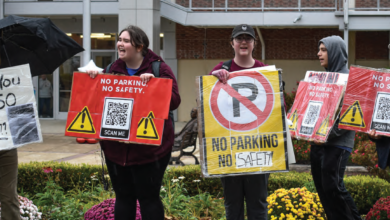Mandatory testing for unvaccinated students and employees ends
By Shaun Chornobroff
Just over two years since the coronavirus pandemic touched down in the state of New Jersey, Rider made another step toward its return to normalcy by eliminating mandatory surveillance testing for unvaccinated students and employees on March 30, Rider’s Vice President for Strategic Initiatives and Secretary to the Board, Debbie Stasolla, told The Rider News.
Stasolla, who is one of the leaders of Rider’s COVID-19 implementation team cited the “relatively low number of cases this semester,” the fact that vaccinated and boosted individuals can contract and spread the virus and the effectiveness of the surveillance testing as reasons for the change.
“I would say a large portion of the small number of positive cases that we discovered through our surveillance testing of unvaccinated students and employees, turned out they were indeed symptomatic. So we did not uncover a lot of asymptomatic positive cases that you might expect in an unvaccinated population,” Stasolla said.
Rider only recorded four tests through its surveillance testing and 20 tests overall from April 2-8, according to the school’s COVID-19 Dashboard which gets updated every Friday. The surveillance tests are from unvaccinated student-athletes who are still required to get tested, per NCAA regulations.
“If you’re symptomatic, we’re still asking that students get tested at the Student Health Center,” Stasolla said. “We all have access, even more so now to at-home tests. Test yourself before coming to campus, class, work events, those kinds of things so we can help mitigate the spread [of COVID-19] between now and the end of the semester, so we can all try to get through the semester successfully.”
Since March 26, the dashboard has recorded 26 cases at Rider and displayed 12 cases from April 2 to the 8.
This accounts for 30% of the 88 cases throughout the spring semester. The rise in positive cases coincides with a rise across the entire Northeast. However, Stasolla remains unworried since the cases the school has seen are mild.
“We’ve not seen severe illness, we’ve not had any hospitalizations,” Stasolla said. “Frankly, I saw more illness in the fall, whether that was with strep or the flu, or other kinds of viral illnesses. I was aware of students being sicker in the fall as compared to what we’re seeing with COVID.”


